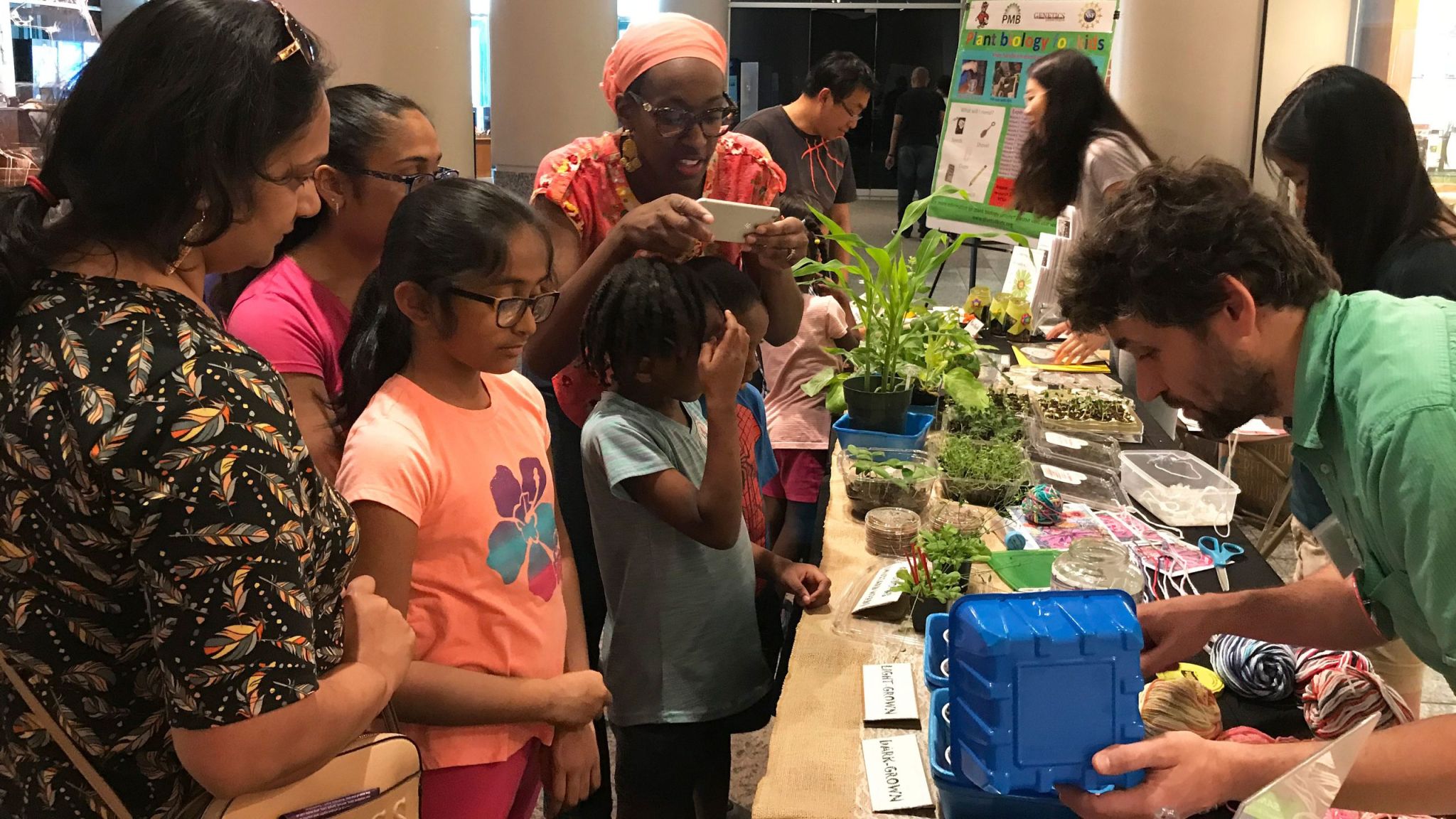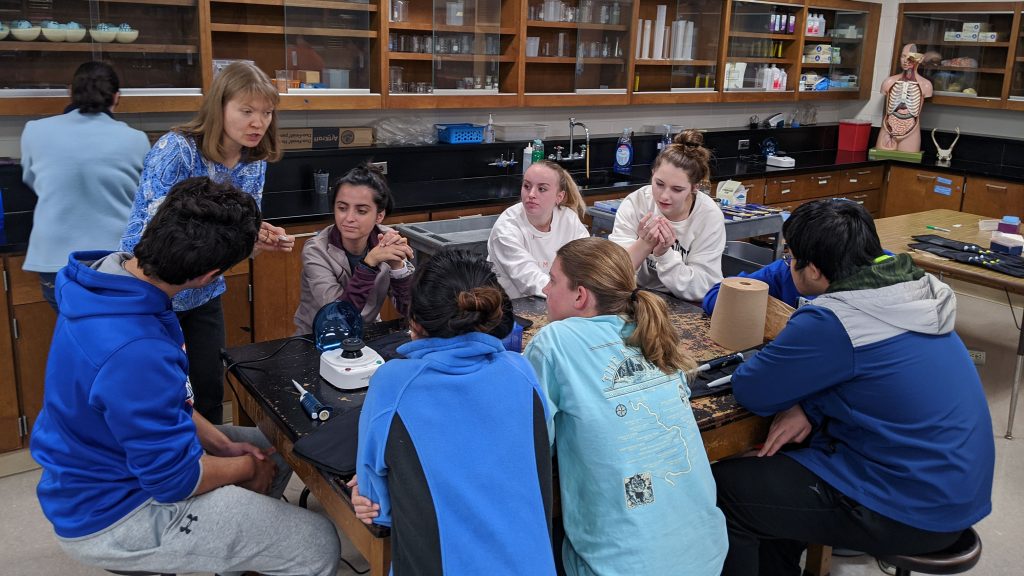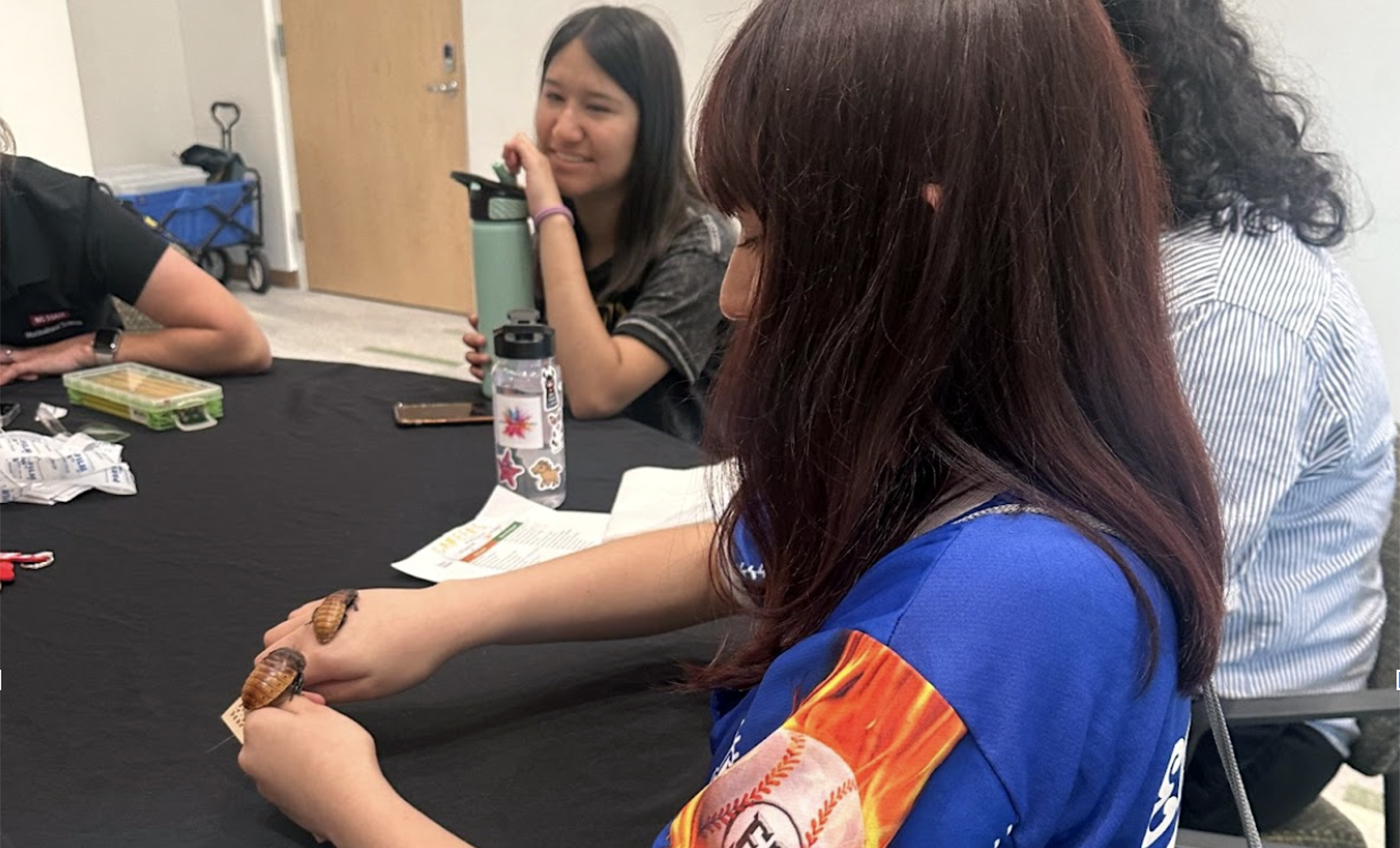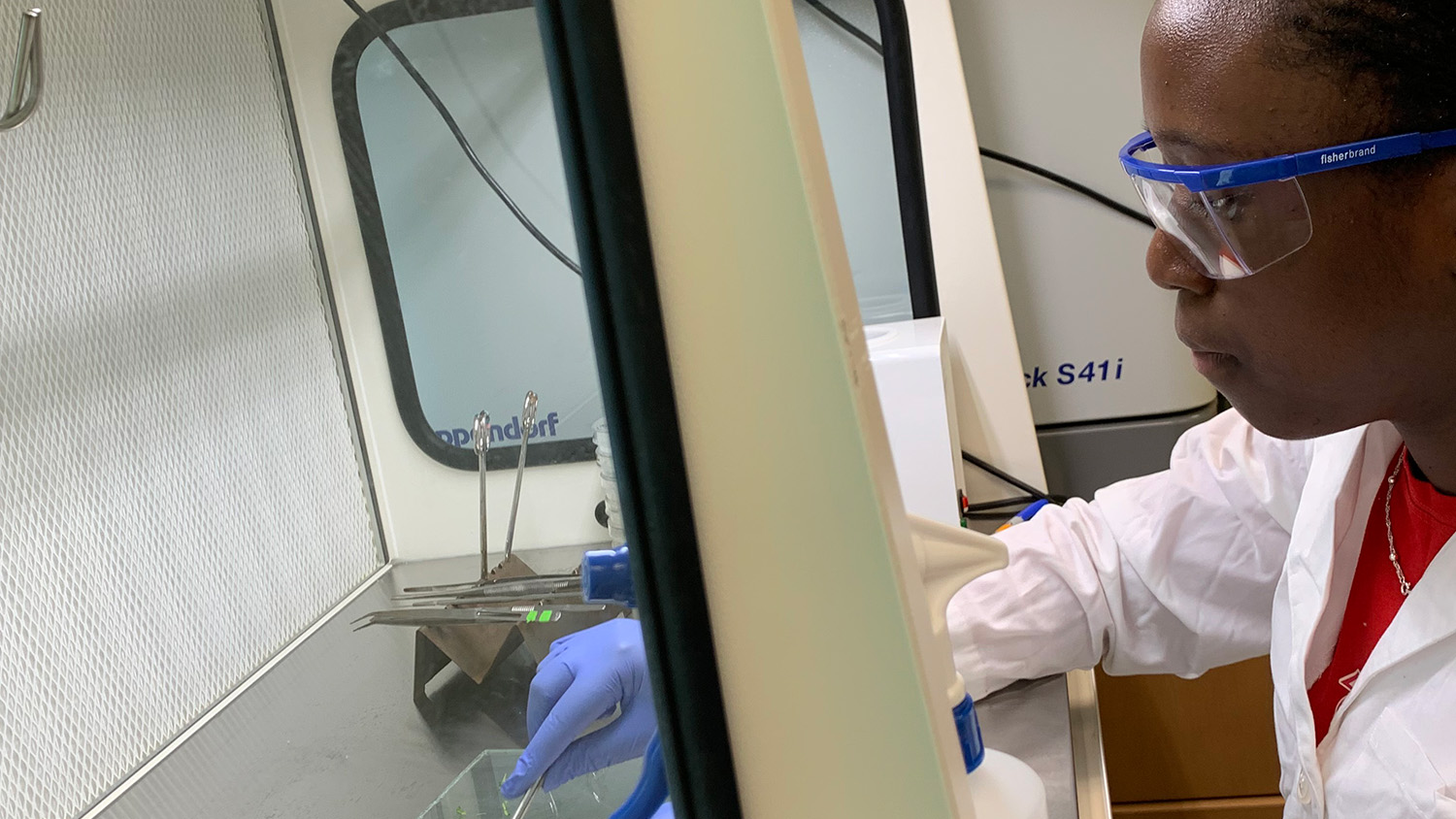Cultivating Curiosity and the Next Generation of Plant Scientists

Colleagues Terri Long and Anna Stepanova are serious about promoting plant sciences and making them accessible to the public.
Did you know that seeds will germinate in the dark? That solar cells mimic biological processes in plants? That plants make life on earth possible by moving nutrients from soil into people?
Stepanova and Long, faculty members in the Department of Plant and Microbial Biology, share these fascinating facts and many more through hands-on children’s workshops at museums, bilingual modules on plant science, college classes, and campus lab tours and mentoring for aspiring scientists.
Now Stepanova and Long are sharing their strategies as co-authors of a new white paper on outreach, including ideas to reach students from groups that are underrepresented in the plant sciences.
It’s part of a national effort to attract the next generation of plant scientists and help the public appreciate plants’ contributions to our lives. A National Science Foundation-supported workshop in 2018 inspired colleagues from across the country to work together.
We asked Long and Stepanova to talk about how they share their passion for plant sciences.
What motivates you to devote time to outreach work?
Anna Stepanova: I think sometimes people may be plant-blind. We’re on the move, driving by in our cars, and because plants are sessile (rooted in place), we tend to not notice them. Our hope is that we can get the younger generation and adults excited about what plants do for us and hopefully convince people to pay attention. I know that people who do gardening love their plants, but this is a smaller community. People who live in cities walk by trees and they may take it for granted, right? They don’t think about the fact that the trees are purifying the air for them or providing shade.
People like Terri and me, we’re scientists, and one of our missions is to educate others and to make the work that we do more accessible to the public so that regular folks understand why tax dollars are being invested into basic research. Terri works on iron deficiency in plants. I work on plant hormones and plant development. So why is it important to study those areas? Why are we getting large grants for our research? We want to make it accessible so that people understand and appreciate why our work is necessary.

In addition to helping the public appreciate plant science, you also want to inspire students to consider careers in plant sciences. Tell us about that goal.
Terri Long: I think that increasing the number of students from different socioeconomic, ethnic and racial backgrounds has been a challenge in plant sciences. I can probably count on one hand the number of African American faculty who are plant molecular biologists here in the U.S., and very few of them are U.S.-trained. So that makes me think a lot about the pipeline.
What can we do to get students interested and visualize plants as being something that they could pursue careers in the long term? How can we expose students from various backgrounds who are generally encouraged to go into medicine, to pursue plant biology instead? There are many different fields to go into in plant biology. And a lot of students aren’t aware of that, so what can we do to reach students, to provide educational opportunities, to share examples of how to do this, not just as a career, but also to be cognizant of it in their everyday lives? So that’s been one thing that I’ve been particularly interested in, and why I was drawn to this outreach workshop with my colleagues Anna and Jose Dinneny (a co-author of the white paper from Stanford University).
With few mentors who were plant scientists, what led you to become a plant biologist?
Terri Long: I grew up in a farming community, close to the land. My father always took us on walks in forests. It just really intrigued me that so much about our survival relies on plants. To this day I am fascinated by how, as Anna was saying, plants are sessile, but they’re quietly doing so many things. It’s amazing to me. To me they physiologically are more complicated and more fascinating than humans. I’ve been really intrigued by this from early childhood. Then when I found out that there were such things as graduate school and that you could be a scientist, that you could actually make a living studying plants, I was hooked.
Anna, you and Jose Alonso, your husband and colleague, have done a lot of bilingual outreach work for kids of all ages. How did that get started?
Anna Stepanova: We have a Plants4Kids program that targets elementary school children. The reason we started focusing on younger children is because kids have natural curiosity and they have the time to invest into learning things, as opposed to adults who are always very busy.
When my own kids were little, we needed to keep them busy during a spring break. We figured planting seeds would work. My kids were asking me, Should we use this soil or that soil? Should we put the seeds far apart or should we put them close to one another? I said, Why don’t we try different things and see what works? I realized that they have natural curiosity, but they need some guidance. So rather than me telling them, OK, you plant one seed per pot, I can tell them, Why don’t you try different things and see what works out better?
If my kids had a lot of fun with that, I felt like maybe other kids would as well.
My husband, Jose Alonso, is originally from Spain. Because of his connections to Spain, we always had Spanish-speaking postdocs and we intentionally hire Spanish-speaking undergraduate students to help us develop lessons. We have a very talented undergraduate student, Eduardo Santana, who’s of Mexican origin, but was born and grew up in the U.S. and speaks fluent Spanish. He’s helped us not just with the Plants4Kids Program but also with developing scripts for videos. One thing we’re working on right now is putting everything in a visual format, as opposed to us having to present in the museum every time, though we’ll continue going to the museum once we’re allowed back following COVID safety restrictions.
How do you reach kids as they get older?
Anna Stepanova: Even though our main audience was younger children, a colleague of mine from Indiana University, Roger Innes, told me, You know what? We used your modules in the middle school and they loved it. We hadn’t thought of this as something interesting to older kids, but apparently it was, it worked well, and it made sense for the organizers to rely on something that has a record of success rather than start developing a new activity from scratch.
As kids get to high school age, they’re considering college careers. They need experiences to pump up their resumes for their college applications. We could recruit high school volunteers to come to the museums with us and work with young kids because they need volunteer hours. They want to have research experience because that looks really good. But whatever the initial reason is, I see that they become excited about plants.
And the skill set that you learn through gardening or just tending to plants is something that you can find rejuvenating and relaxing down the road in your life, even if you don’t choose it as a career path. But my hope is that some of the kids that we work with through our demos and through our website would consider plant science as a career path.
Terri, in your outreach and college classes you also emphasize the environmental role of plants. What is your strategy?
Terri Long: One reason we do the outreach is so that people understand that we’re connected to plants. Using plants as models for living organisms, to understand physiological reactions, molecular actions, is one important way to help students understand science.
But now more people are thinking about sustainability and the impact of global warming. Plants and animals, we’re all sharing the same resource: earth. And I think it’s important that people are aware of plants not only as something we eat but as the main mechanism by which nutrients move from the soil into our bodies. Without plants, we wouldn’t be here. And so just understanding why it’s important to make sure that we maintain the earth in a way that plants can survive. We need to make sure that we are doing things that are sustainable so that we can all survive.
How do you talk about these issues with college students?
Anna Stepanova: We often talk about food, feed, fuel and fiber, which all come from plants. Food and feed, we understand. But just about any renewable energy comes through plants, one way or another. Even the solar panels that we use to capture the energy of sunlight are trying to imitate biological processes that take place in plants. And then that fiber is the clothes that we wear or the books that we read. And so I feel like plants are at the base of everything. And of course, Terri and I are passionate about this because we chose that as a career for a reason, but we want to share some of that excitement with others as well.


